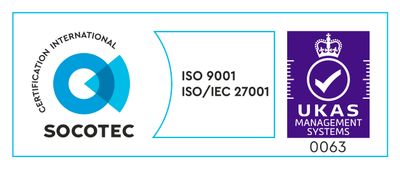Modernising Data Transfer for Examinations – A2C
To assist the awarding industry in the united kingdom, we developed a data transfer system to support the next generation of exams processing.

The Problem
In England, Wales and Northern Ireland the main qualifications for school leavers and those entering further or higher education are the General Certificate of Secondary Education (GCSE) and A/AS levels. There are also vocational qualifications such as national vocational qualifications (NVQs). Schools and colleges - also referred to as exam centres - place orders for examination and assessment events with awarding organisations, who administer and design the qualifications.
Prior to 2011 the awarding industry relied on a number of value added network (VAN) providers. These operated as middle men to transfer data between centres and awarding organisations. The data took the form of EDI (electronic data interchange) files, which are plain text files that include business transactions.
This solution worked but was antiquated and required each of the awarding organisations to subscribe to each of these network providers (VANs), and each centre to subscribe to at least one VAN. Avco Systems participated as a VAN provider from 1998 until 2012 when the EDI exam service was terminated following completion of this project migration.
While the system worked both awarding organisations and centres wanted a more modern and unified approach where each centre sent the data directly to each awarding organisation over the internet without both needing to subscribe to the same VAN.
Together, via the industry body the Joint Council for Qualifications (JCQ), the awarding organisations settled on the AS4 profile of the OASIS EBXML3 standard as the basis for the new transport protocol.
The AS4 profile chosen provides the following benefits;
- Non-repudiation
- Cryptographically signed
- Encrypted
- Point to point
The expectation was that off-the-shelf offerings would appear in a similar manner as the AS21 standard. This new protocol was termed the A2C Transport, with a replacement for the EDI messages to follow a few years later in the form of the A2C Data Standards.
The JCQ put out a tender request for development of the client software, to become the A2C Migration Application, which was won by Avco Systems.
In order to communicate with centres that were using the A2C Migration Application, each awarding organisation required a transport server. This would allow them to receive orders from centres as well as make results available to centres as required. Initially each awarding organisation planned to develop their own system or find an off-the-shelf product to solve the problem.
The Approach
During development of the A2C Migration Application, Avco Systems constructed a basic transport server in order to test the sending and receiving of messages. At this time it became apparent that the provision of a transport service would be more involved than many anticipated. The requirements for such a system differed from the usual B2B offerings in a number of ways including;
- As clients are authenticated by digital signature and routing information was determined by a number of alternate names on their certificates, the ability to generate these certificates with specific X509 extensions was required. This could either be part of the service or would have to be built separately to support it
- A high number of trading partners with a many to many relationship all talking to the awarding organisation but not to each other
- Bursty load pattern with relatively low load most of the time but significantly more traffic at peak times; for example on result days and entry deadlines
- Critical times and load are typically at unsocial hours, so manual intervention for normal operation is to be avoided
For the certificate authority we took the decision to integrate it into the service as an optional feature. This means that as well as offering an integrated service an awarding organisation is free to create their own client certificates. Whether an awarding organisation opts to generate their own certificates or utilise the built in functionality, the management features are identical.
The complexity of routing information was reduced because all messages in a given instance are to or from the awarding organisation. This avoids the need for complex many to many relationships in the data model.
The load pattern means as much work as possible is to be avoided during a single request. This is prioritised in terms of centre requests over awarding organisation requests. The service avoids recomputing cryptographic hashes and pre-compresses files so they are not required to be computed while returning a message to a client. When an awarding organisation uploads a message for a centre the alternative digests are computed to avoid delay when provided to a centre.
Many results’ releases take place shortly after midnight on the day of release and occur much more frequently than the big summer results’ days. The service needs to support an awarding organisation provided embargo on messages for centres. These messages will not be available to centres until the embargo has passed. This avoids the need for a person to take action in order to release the embargoed results; removing this risk factor.
The service needs to support five major awarding organisations, each with around 5500 centres connecting, so is scaled out in our ISO 27k data centre to provide the necessary resiliency and redundancy for this critical system.
The Result
The A2C Migration Application remains in use in thousands of schools and colleges worldwide, supporting the operations of examination officers and awarding organisations.
The transport service provides a best-in-class A2C transport environment for awarding organisations; including result splitting and access key management. Other implementations suffered reliability or availability issues that resulted in other awarding organisations migrating to our service offering.
The service supports many ways to integrate as well as multiple message formats, including the new A2C Data Standards, have been updated to support multiple awarding organisations and more modern signature algorithms for enhanced security and flexibility.
In the 6 years since 2011 we have distributed over 345,000 result files to schools and colleges worldwide. In the process we became involved with the A2C data standards and developed an offering to assist with their implementation as well as grown our domain knowledge of the awarding sector.
- AS2 is a previous applicability statement. Similar in intent to AS4 but based on an older set of underlying standards. It gained broad industry acceptance and is in use across multiple sectors. [return]





